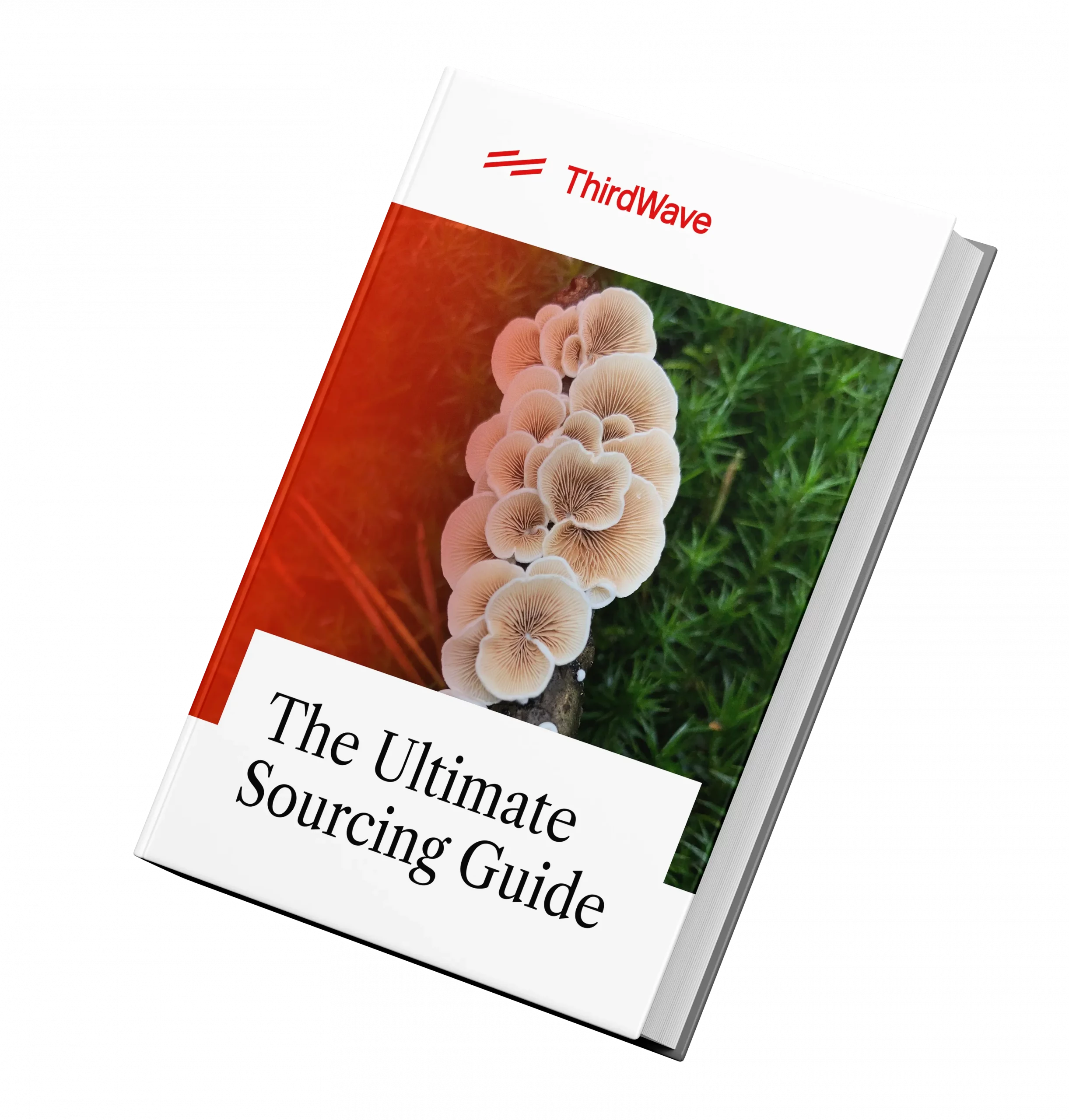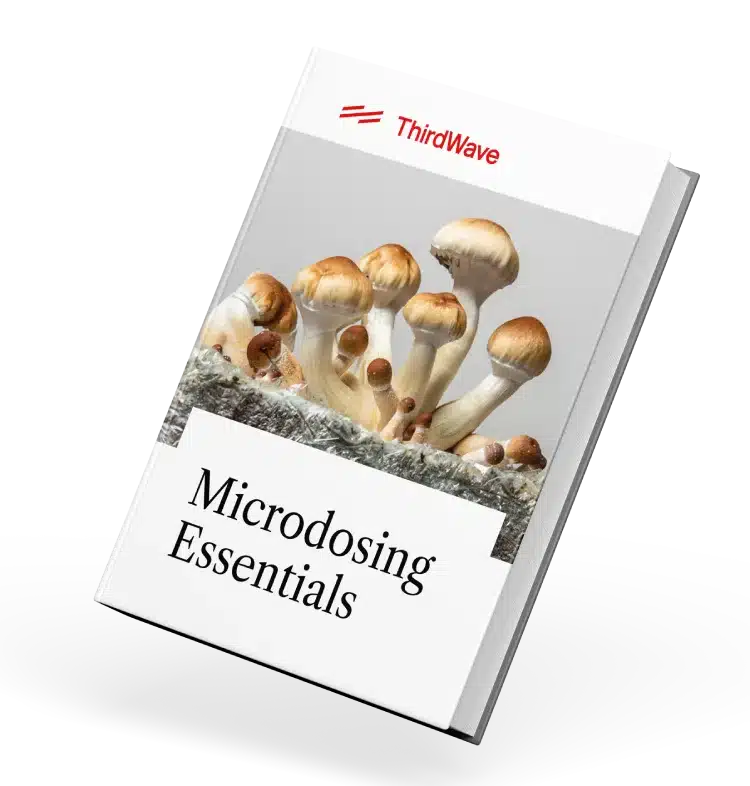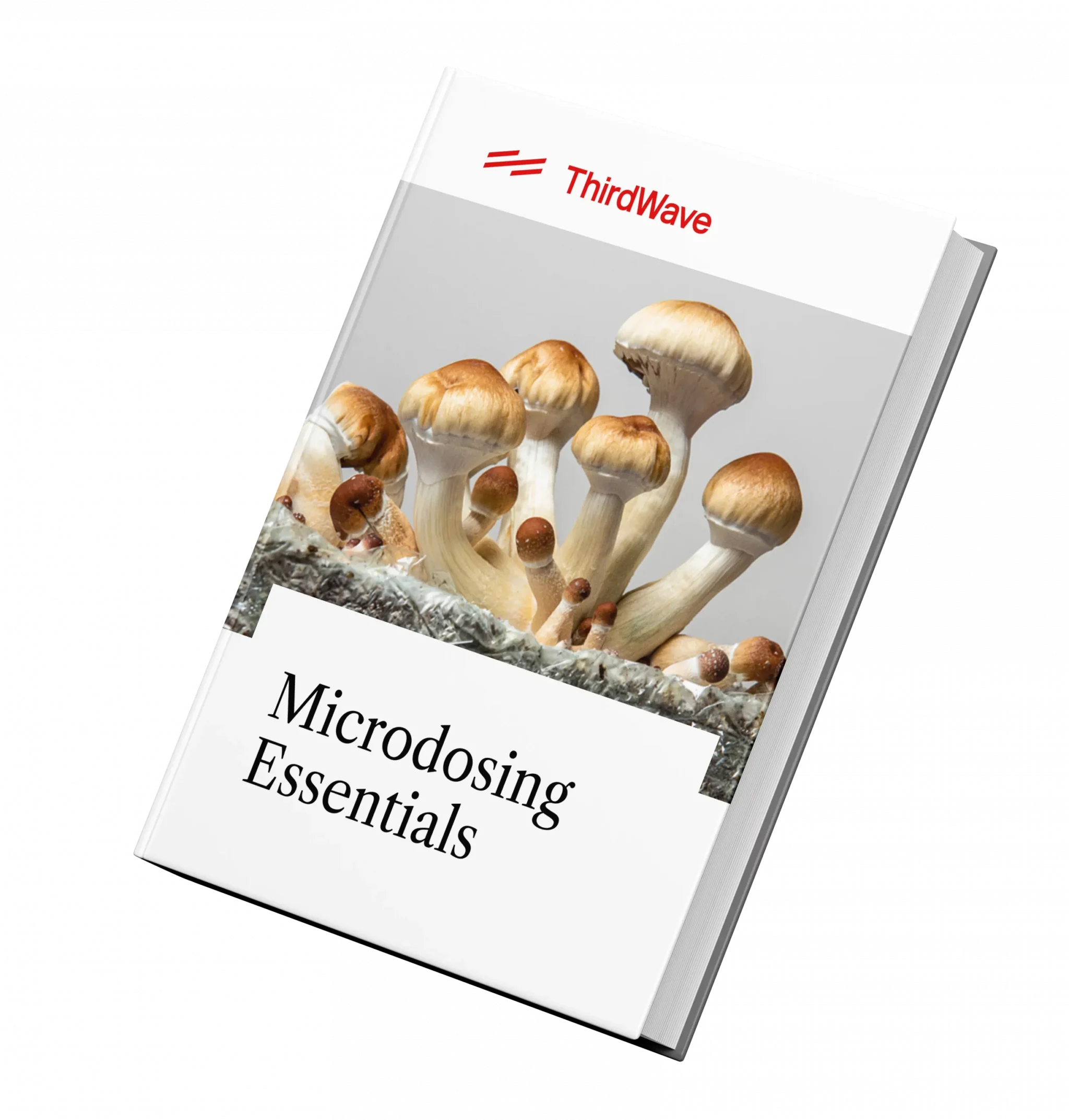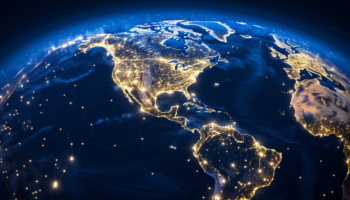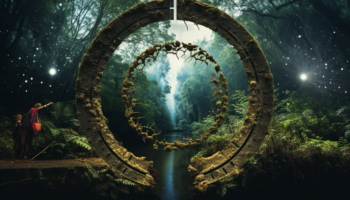The Ultimate Guide to
Ayahuasca
(Huasca, Yagé, Brew, Daime, La Purga)
Ayahuasca is a potentially illegal substance, and we do not encourage or condone the use of this substance where it is against the law. However, we accept that illegal drug use occurs, and believe that offering responsible harm reduction information is imperative to keeping people safe. For that reason, this guide is designed to ensure the safety of those who decide to use the substance.
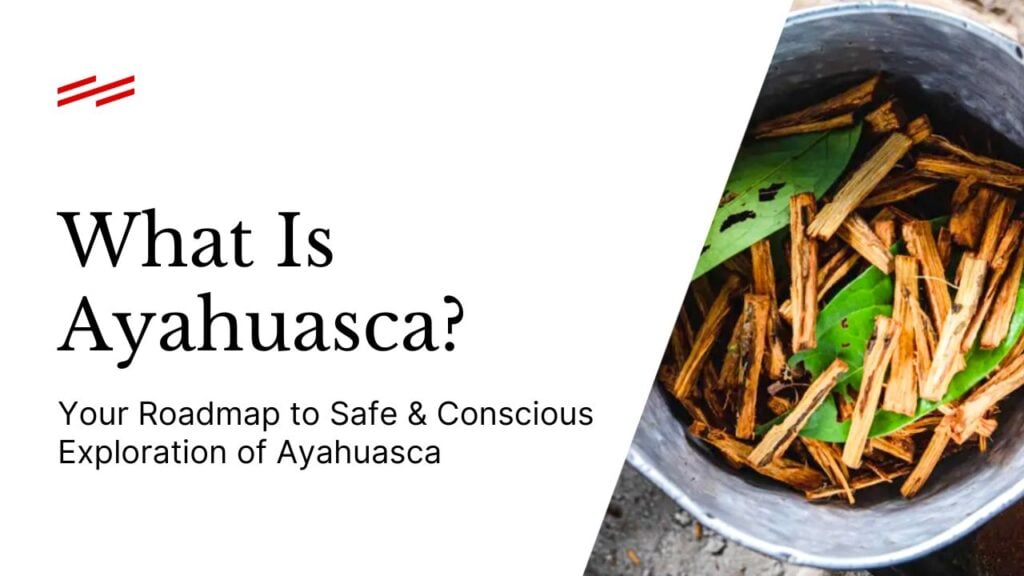
Overview
01Traditional ayahuasca healing ceremonies have recently become more popular among Westerners, leading to an increase in the appearance of ayahuasca retreats. These allow people far-removed from the traditional lifestyle the opportunity to receive the ayahuasca benefits of healing and new beginnings.
Various studies have shown that ayahuasca therapy may be effective in the treatment of depression and addiction. As this ancient brew comes more into the limelight, we may see it become a widespread and accepted form of psychedelic therapy.
If you’re interested in working with Ayahuasca, browse a list of vetted and verified Ayahuasca retreat providers through Third Wave’s Directory.
Grow 1 Year's Worth of Microdoses in Just 6 Weeks
Third Wave partnered with top mycologists to create the world’s easiest and best mushroom growing program (kit, course, and expert support).
- Pre-sterilized and sealed
(ready to use out of the box) - Step-by-step video and text course
- Access to growing expert in community
- Make your first harvest in 4-6 weeks
- Average yield is 1 - 4 ounces (28-108g)
- Fits in a drawer or closet
- Enter info for Third Wave discounts:
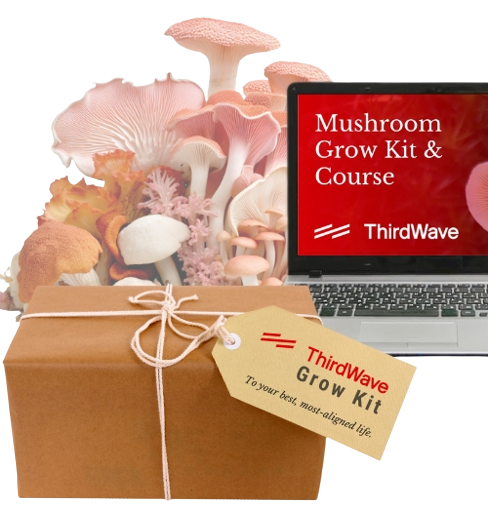
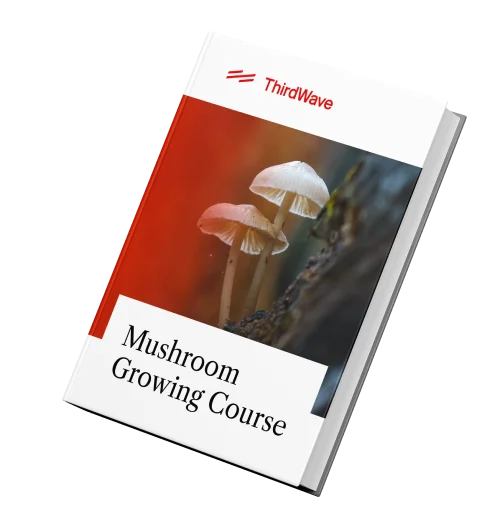
Grow 1 Year's Worth of Microdoses in Just 6 Weeks
Third Wave partnered with top mycologists to create the world’s easiest and best mushroom growing program (kit, course, and expert support).
- Pre-sterilized and sealed
(ready to use out of the box) - Step-by-step video and text course
- Access to experts in community
- Make your first harvest in 4-6 weeks
- Average yield is 1 - 4 ounces (28-108g)
- Fits in a drawer or closet
- Enter info for Third Wave discounts
Effects
02Physiological effects
In one trial, people who had previous experience with ayahuasca received 0.60-0.85 mg/kg dose and reported peaking between 1.5 and 2 hours after ingestion.[9] They reported side effects such as perceptual hallucinations and rated their moods more positively. Blood concentrations of DMT peaked at about 1.5 hours after ingesting, which coincided with peak psychedelic experiences.
Diastolic blood pressure showed a significant increase at higher doses (0.85 mg/kg), while systolic blood pressure and heart rate increased moderately.
The Ayahuasca Purge
Modified physical sensations and vomiting/purging are reported relatively frequently as the most unpleasant effects, at least physiologically. Most people think of purging as simply vomiting, but it also includes sweating, shaking, crying, and sometimes uncontrolled defecation.
In the ayahuasca ceremony, purging is considered an act of cleansing the mind, body, and spirit.
So while these are definitely among the most unpleasant effects of ayahuasca, purging also an integral part of the experience—perhaps even necessary to achieve the full benefit of the medicine.
To learn more about the experience, see Ayahuasca: Purging Your way to a Better Life and the Ayahuasca Diet.
Psychological effects
A small control trial of six male participants with previous experience found that psychological effects of ayahuasca were first noted 30–60 minutes after ingesting one of three doses (0.5, 0.75, and 1.0 mg/kg) and peaked between 60–120 minutes. All of the psychological effects were resolved by 240 minutes (four hours).[10]
Five out of the six reported a pleasant and enjoyable experience, while one reported a bad trip with disorientation and anxiety (mid-level dose, 0.75 mg/kg body weight).
The first effects reported by the volunteers were physical changes, including burning sensations in the stomach, tingling sensations, changes in perception of body temperature and skin sensitivity, and mild nausea. Hallucinations reminiscent of ayahuasca art were typically intense and experienced suddenly. Most reported a degree of initial anxiety or fear, which faded in all but one case thereafter.
All subjects experienced visual hallucinations; their intensity was dose-dependent. They did not persist throughout the entire experience, but usually came and went in waves. These effects ranged from increases in an object’s brightness and sharpness, or as vibrations in the visual field, to rapidly moving patterns, and scenes that were visible with eyes either closed or open at the medium and high doses.
Changes in auditory perception were also reported and were also dose-dependent. Volunteers reported enhanced hearing; i.e., they said that sounds became more clear and more distinct.
Thought processes and cognition were also modified. The volunteers reported an enhanced rate of thinking which was generally focused on personal psychological content. They reported gaining insight into personal concerns. Most also recalled memories related to recent personal matters.
Emotional reactions were intensified at higher doses. A common report was experiencing happiness, sadness, awe, amazement, sometimes simultaneously as contradictory feelings. At the medium and high doses, volunteers reported that the experience was similar to dreaming.
At the medium and high doses, transient changes in the sense of self and the passing of time were observed. A sense of bodily detachment was frequently reported at the high dose, while feelings of closeness to others, happiness, and euphoria were reported at both the medium and high doses.
Learn more about what to expect in an ayahuasca experience in this video by Paul F. Austin.
Personal Growth
03Many who seek experiences of personal growth with ayahuasca report a sense of connectedness and compassion with others around them.[15] Some report spiritual awakenings that lead to long-term, stable perspective shifts. This is likely a result of achieving a particularly intense level of introspection that leads to profound self-awareness and clarity regarding personal issues and belief systems.[16],[17] Dennis McKenna also cites its ability to make users feel interconnected with the natural world as one possible avenue by which the discussion around environmental conservation efforts can be elevated and expanded.[18]
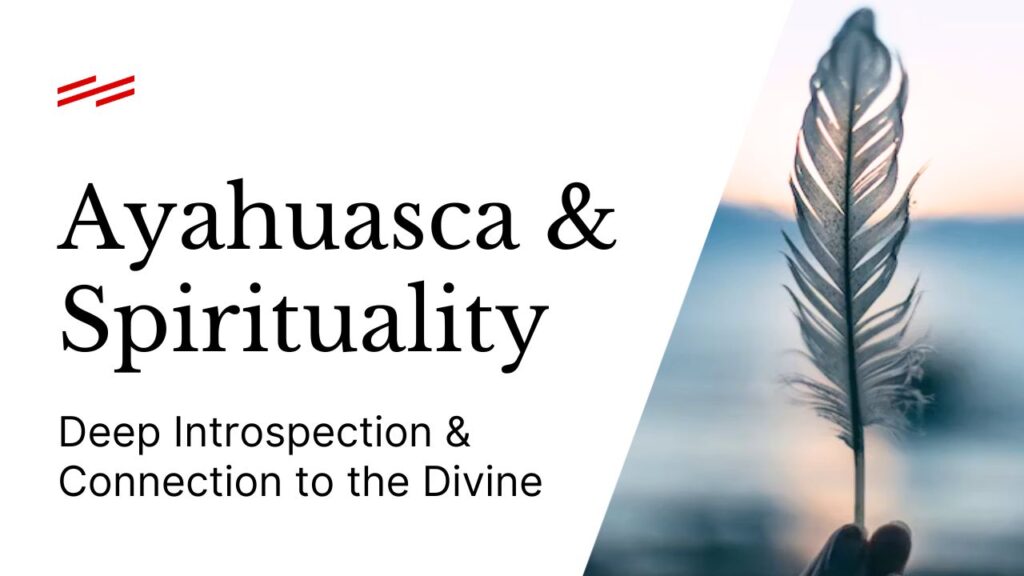
Ayahuasca Popularity in Personal Growth Mainstream Culture
Ayahuasca has also seen a surge in popularity among entrepreneurs and creatives that is beginning to penetrate mainstream culture. As one New Yorker article puts it, “If cocaine expressed and amplified the speedy, greedy ethos of the nineteen-eighties, ayahuasca reflects our present moment—what we might call the Age of Kale.” [19]
Tim Ferriss is also a vocal advocate of ayahuasca. After a particularly harrowing trip that included grand mal seizures and hyper-anxiety inducing hallucinations, Ferriss claims that “ninety percent of the anger I had held onto for decades, since I was a kid, was just gone. Absent.” [20] He also claims that almost everyone of any influence in the startup industry uses ayahuasca at some point.
Ayahuasca retreat centers are opening up across the world, claiming to provide the ideal setting for self-improvement – although the high price tag and strict exclusivity of some retreats have raised concerns about the way this plant medicine is being incorporated into Western culture.
See our Essential Guide to Ayahuasca Retreats for information about the benefits of ceremonies, along with incredible research on how Ayahuasca retreat ceremonies can transform your mental health
Therapeutic Use
04With appropriate supportive settings that include talk therapy and social network support, regular and long-term use may aid in lasting lifestyle changes. This is most notable for substance abuse and addiction.
In a qualitative study surveying a group of people who joined the ayahuasca church UDV (an organization that regularly uses the brew in their religious ceremonies), a large number of the members had histories of alcoholism, substance abuse, domestic violence, and other problem behaviors and lifestyles. These dysfunctional behaviors were virtually resolved after joining the UDV and attending regular ceremonies.
Ayahuasca may also help ameliorate serotonin deficiencies, which have been related to a host of different disorders, including alcoholism, depression, autism, schizophrenia, attention deficit hyperactivity disorder, and senile dementia. Some small studies (e.g., see review in McKenna, 2004 [2]) suggest that long-term use can increase serotonin availability in the body.
A recent study has become the first to analyze the antidepressant properties of ayahuasca in a controlled setting. Twenty-nine patients with severe depression were given either one session of ayahuasca or a placebo, then analyzed for changes in their depression scores. One day immediately following the sessions, the ayahuasca group scored significantly lower on depression tests compared to the placebo group. After seven days, the placebo group had returned to a normal depression level, while the ayahuasca group was still on a much lower depression score.
It’s important to remember that if it does possess therapeutic value (which it almost certainly does), to obtain the most healing benefit possible one must take ayahuasca in a safe, therapeutic, and supportive environment. Drinking the brew alone at home will most likely not help you out. We recommend considering an ayahuasca retreat, where you are surrounded by supportive people in a comfortable environment.
See our Essential Guide to Ayahuasca Retreats for information about the benefits of ceremonies, along with incredible research on how Ayahuasca retreat ceremonies can transform your mental health.
Legality
05Many countries, including those with ayahuasca retreats, have no specific laws about the brew. This leaves the manufacture, possession, and distribution of ayahuasca in a legal gray area pending cases coming to court—as they continue to around the world. It’s therefore important to check the current legal status in any given country before you book a retreat there.
To find legal Ayahuasca retreat providers around the world, check out Third Wave’s vetted Directory.
Where is ayahuasca legal?
The following information may not always reflect the latest developments, but we’ll endeavor to keep it up to date. It is only intended to cover the personal, non-medical possession and use of ayahuasca.
Countries where ayahuasca is legal
To the best of our knowledge, ayahuasca is currently legal in:
Countries where ayahuasca is decriminalized
There appears to be no risk of a criminal penalty for the personal (i.e. “small” quantity) possession or use of ayahuasca in:
- Argentina[36]
- Armenia[36]
- Chile[36]
- Colombia[36]
- Costa Rica[36]
- Croatia[36]
- Czech Republic[36]
- Estonia[36]
- Germany[36]
- Italy[36]
- Mexico[36]
- Netherlands[36]
- Norway[37][38]
- Paraguay[36]
- Peru[36]
- Poland[36]
- Portugal[36]
- Russian Federation[36]
- Spain[36]
- Switzerland[36]
- Uruguay[36]
Important: Decriminalization isn’t a free pass to use ayahuasca however you want. The specifics depend on the country or region and, crucially, on the amount you have in your possession. Confiscation is common, but there may be other, more severe non-criminal outcomes such as fines, driving license suspension, and deportation.
Countries where ayahuasca is illegal
Although ayahuasca is illegal or controlled in each of these countries, there may be regional or circumstantial (e.g. religious) exceptions, as noted below:
- France[40]
- United Kingdom[41]
- United States (except where decriminalized and for some religious use)
[42]
Countries where the law is unclear
Countries that appear to have legislated neither for nor against ayahuasca, or where enforcement is unclear, include:
- Canada[40]
Find out more at our page on the worldwide legality of ayahuasca.
Pharmacology
06The concentration of the alkaloids in brewed ayahuasca tea is several times greater than the plants from which they are prepared. In a 200 ml dose, there is an average of 30 mg harmine, 10 mg THH, and 25 mg DMT, though concentrations will vary based on the geographical region and preparation methods.
Receptor interactions
Ayahuasca likely alters serotonin activity in brain areas that have been implicated in introspection and emotional processing.[5]
The DMT in the ayahuasca brew interacts with serotonin receptors (specifically, the 5-HT2A subtype) that are the target of traditional drug therapies like SSRIs. 5-HT2A receptors are the main target for other psychedelics including LSD and psilocybin.
The MAOIs in ayahuasca mainly act to prevent the breakdown of DMT in the stomach; [6] although they may also have anti-addiction effects through their effects on the dopaminergic system. [7]
Drug interactions
Ayahuasca affects both serotonin and monoamine oxidase levels. Selective serotonin reuptake inhibitors (SSRIs), a class of antidepressants, should be avoided before an ayahuasca ceremony to avoid dangerous adverse reactions.[8]
There’s also an ayahuasca diet to follow in preparation for drinking the brew, whether as part of a ceremony or not. The MAOIs found in the brew can cause severe reactions when combined with foods such as cheese, beer, wine, yogurt, coffee, and chocolate, and with amphetamine-like compounds such as ephedrine and MDMA. The best way to avoid ayahuasca side effects in combination with these substances is to fast for 12 or more hours before the ayahuasca ceremony.
These substances/medications should also be avoided before/during an ayahuasca ceremony:
- Antihypertensives (high blood pressure medicine)
- Appetite suppressants (diet pills)
- Medicine for asthma, bronchitis, or other breathing problems; antihistamines, medicines for colds, sinus problems, hay fever, or allergies (any drug containing dextromethorphan/DXM or with DM, DX, or Tuss in its name)
- CNS (central nervous system) depressants (Xanax, Ativan, etc)
- Vasodilators
- Antipsychotics
- Barbiturates
- Alcohol
Ayahuascasaftey.org also lists many substances you should avoid or use caution with if you’re planning an ayahuasca trip.
Ethical Considerations
07Kenneth Tupper (2009)[11] outlines some of the issues facing cultural practices in the face of growing popularity and globalization.
Some see “exotic” spiritual practices like ayahuasca as a replacement for the declining organized religions of the west, but they often only provide the appearance of authenticity compared to their familiar religious and spiritual practices. This has led to the perpetuation of the “noble savage” stereotype whereby indigenous cultures are largely denigrated by Westerners, yet some select cultural practices are lauded.
One example is the so-called neo-ayahuasqeuro — a kind of self-styled ayahuasca shaman with very little or no connection to the indigenous cultures that practice ayahuasca ceremonies. While some adhere to traditional practices, a potentially lucrative market has attracted enough charlatans and hucksters (both non-indigenous and indigenous) to be cause for concern. Free market exchange for monetary gain is often at odds with the traditional indigenous practices of the Amazon, introducing another layer of ethical complexity.
Another recent cause for concern related to charlatans masquerading as keepers of the tradition of ayahuasca is reports of sexual predators pretending to be shamans. This is especially concerning given that ayahuasca tea can be used to treat issues involving sexual trauma and/or sexual dysfunction and intimacy problems.
Biopiracy is an especially urgent concern of cultural appropriation with ayahuasca. Western pharmaceutical companies have recognized the biosphere as an important source of healing medicines and virtually never credited, let alone compensated, the people who have used these within the context of intergenerational traditional medicine. They’ve even gone so far as to seek out shamans who, unaware of companies’ real motivations, show them where these plant sources can be found and how they are prepared to gain “inside understanding” about the medicine.
Some point out, though, that the wisdom of the cultures of the Amazon basin will only be spread to all of humanity by bringing in outsiders. The force of globalization can’t be stopped at this point, and so ayahuasca and other traditional practices will continue to be spread across the planet. It’s up to us outsiders to ensure that it’s done more respectfully than it has been in many cases to date.
History & Stats
08The use of ayahuasca is a widespread practice among indigenous tribes in the Amazon Basin. Such practices were almost certainly well established in pre-Columbian times, with some speculating that the practice goes back to the earliest human inhabitants of the region. Ayahuasca, along with many other medicinal plants, gradually became integrated into the ethnomedical traditions of the mixed populations following European contact in the New World.
The therapeutic use of ayahuasca tea is experiencing unprecedented expansion worldwide and is the object of increasing biomedical research. Its constituent plants were central to indigenous cultures in the New World and were used in medicine, religious ceremonies, and rites of passage. Throughout the first half of the twentieth century, small groups of indigenous people continued to use these plants in traditional ceremonies and other cultural practices.
Read more about indigenous ayahuasca practices.
These practices continued without external interference until more recent times, likely due to the relative isolation of many of these groups in the Amazon rainforest. During the 1980s, over 70 different names were recorded for ayahuasca preparations from disparate indigenous tribes, illustrating its widespread use by isolated groups. In Peru, knowledge of the brew has passed from the Amerindian shamans to vegetalistas (mestizo healers), who use it to diagnose and treat patients in the frontier cities of the Amazon.
In Brazil, the practice and use of ayahuasca have been blended with Christian and Afro-Brazilian religious beliefs, giving rise to the Santo Daime, the União do Vegetal, the Barquinha, and other spiritual movements.[3] These new forms have contributed to the spread of ayahuasca use to mainstream South American society and greater awareness among other people outside of the continent.
While DMT is a Schedule I drug in the United States, effectively banning it for all uses including medical and research purposes, several religious groups have litigated and won the right to use it in spiritual/religious practices.
Interest in Ayahuasca over time
Ayahuasca saw a surge in the number of related publications beginning in the late 1960s and 1970s with the psychedelic revolution. This was followed by a sharp decline, then a gradual increase in related-publications throughout the 1980s and 1990s. From the mid-2000s to today, we have seen an explosion in related publications.
(link)
In Third Wave’s Ultimate Guide to Safely Sourcing Psychedelics, you will discover an astonishing menu of psychedelic medicines… In Third Wave’s Ultimate Guide to Safely Sourcing Psychedelics, you will discover an astonishing menu of psychedelic medicines… Beyond LSD and Psilocybin is a field. This guide will take you there.
…and how to source them without legal risk. Beyond LSD and Psilocybin is a field. This guide will take you there.
…and how to source them without legal risk.
FAQ
09What is ayahuasca?
Ayahuasca refers to both the brew and the plant used to make it—specifically, the ayahuasca vine, or Banisteriopsis caapi. In the Quechua language, ayawaska means “vine of the dead” or “vine of the soul.”[23][24] In the traditional tea, pieces of the vine are combined with the leaves of Psychotria viridis (or chacruna, from the Quechua term chaqruy, “to mix”).
Harmala alkaloids in the vine function as MAOIs, inhibiting stomach enzymes that would otherwise destroy the DMT.
What can I expect in an ayahuasca ceremony?
Ayahuasca ceremonies vary depending on whether they follow traditional or modern spiritual practices.
Regardless, all ayahuasca ceremonies should include experienced medicine holders or shamans who prepare and disperse the psychedelic brew to the group.
Medicine holders and their support team of facilitators provide guidance and empathetic presence throughout the hours-long ceremony. The team usually includes musicians and singers as well, using songs to call in spirits and acoustics to ignite deep presence and plant connection.
Depending on the tradition, ceremonies may also include sacred silence, cleansing rituals, and prayers.
Watch the video below to learn more about what to expect in ayahuasca ceremonies.
How do you pronounce ayahuasca?
EYE-uh-WAH-skuh, as in the Quechua spelling ayawaska.
What is yagé?
Yagé, basically, is just another name for the brew. The term originates from the Tukano people and is therefore more common in Colombia and other parts of the northwest Amazon.[25][26]
There may be technical differences between yagé and ayahuasca, such as the inclusion of chaliponga (Diplopterys cabrerana) or just the core and not the bark of B. caapi.[27][28] According to some, yagé also has a masculine spirit, in contrast to “mother ayahuasca.”[28] In practice, however, the terms are mostly interchangeable.
What is ayahuasca like?
The ayahuasca experience is often described as many years of therapy packed into a single night. It’s typically characterized by visions, vomiting, and emotional catharsis. You can get a sense of ayahuasca visions (though not everybody experiences them) from the ayahuasca art of Pablo Amaringo and various ayahuasca documentary films. In the traditional ceremony context, these visions are guided by the songs and chants—the ayahuasca icaros—of the shaman.
The prevailing effect for almost everyone who drinks the brew is a kind of life audit—a frank and often brutal evaluation of one’s lifestyle, relationships, and behavior.
For more on ayahuasca effects, see the Effects section above or watch this video by Paul F. Austin on what to expect in an ayahuasca experience.
Is ayahuasca legal in […]?
If you’re interested in working with this medicine, you can read about the legality of ayahuasca worldwide and view a complete list of verified ayahuasca retreats in Third Wave’s psychedelic Directory.
Can it be detected in a drug test?
DMT, the psychedelic compound in ayahuasca, is not included in a typical drug screen, nor is it included in any known extensive drug screens. It is also not chemically similar to substances that are typically tested for, so the likelihood of triggering a false positive for other drugs is near zero.
Will it make me sick?
Ayahuasca will often induce nausea or diarrhea in the early stages of the experience. This is why, traditionally, users will avoid eating or drinking for some time before the ceremony. It is considered a purification of the body and spirit, and a crucial part of the ceremony. There have been no reports of long-lasting harm from this aspect of the ceremony.
Listen to our podcast episode with Raz Degan talking about: Is Ayahuasca Tourism Doing More Harm Than Good? or Click here to read the transcript
How common is ayahuasca death?
Ayahuasca death cases are few and far between, and commonly attributed to interactions with other substances or medical contraindications. This is not to say ayahuasca dangers are negligible—just that following advice is essential. This is not a substance to be taken lightly.
Do I have to travel to Peru for a ceremony/retreat?
Although traditional ayahuasca ceremonies are mostly associated with the Peruvian Amazon, there are many places you can find the brew. See our Essential Guide to Ayahuasca Retreats for details on ayahuasca tourism. Various religious groups use ayahuasca in their gatherings too. The UDV, for example, is a Christian organization that uses ayahuasca legally (at least in some countries) in its ceremonies.
See our Essential Guide to Ayahuasca Retreats for details on ayahuasca tourism or find legal Ayahuasca Retreats in our psychedelic directory.
Where can I buy ayahuasca?
Beyond the witches’ markets of South America, you’re unlikely to find ayahuasca for sale. Certainly, if you do find ayahuasca tea for sale on the internet, you should view it with extreme caution (not least because it’s generally illegal). But ayahuasca ingredients (traditional and alternative) are widely available online.
Search ethnobotanical suppliers and reputable headshop websites to purchase ayahuasca plant materials.
How to make ayahuasca?
Traditional ayahuasca is a boiled decoction of B. caapi vine and P. viridis leaves. The latter ingredient is sometimes substituted with other plants. Different traditions also have their own special rituals for ayahuasca preparation.
Various non-traditional ayahuasca recipes exist, too, using plants native to regions beyond the Amazon. One ayahuasca recipe, for instance, calls for Syrian rue and Illinois bundle flower.
Pharmacologically, there are just two components to the brew—DMT and MAOI—and each of these can be found in a variety of plants native to virtually every continent.
How long does ayahuasca last?
Ayahuasca affects people differently depending on several factors. Some would say it lasts a lifetime, at least when it comes to the benefits. Ayahuasca healing can certainly outlast the immediate effects. In general, though, the trip itself usually lasts between five and eight hours.[29][30]
Will I have a negative experience?
Ayahuasca contains an intense psychedelic compound that is certainly no guarantee of a pleasant experience. However, taken in the right context and with the right mindset, most people find the experience to be extremely meaningful. Ayahuasca can help you view various painful aspects of your life, allowing you to see how they can be made better. This experience may not be gentle, but it’s typically integral to healing.
Can I mix it with other drugs?
Ayahuasca should not be mixed with Tramadol, as it can lead to serotonin syndrome. Be cautious if mixing ayahuasca with cannabis, amphetamines, or cocaine. Click here for a detailed chart of safe drug combinations.
Does ayahuasca produce tolerance?
Ayahuasca tolerance is very mild, and you can take another dose within a day without significantly reduced effects. It also does not produce tolerance to other psychedelics.
Can I microdose with ayahuasca?
There is not much information about ayahuasca microdosing, as microdosing is most commonly performed with LSD and psilocybin. However, as it contains DMT, a classic psychedelic in the same family as LSD and psilocybin, it can be microdosed in a similar way. Click here for more information about microdosing ayahuasca.
Footnotes
10[1] Domínguez-Clavé, E., Soler, J., Elices, M., Pascual, J. C., Álvarez, E., de la Fuente Revenga, M., … Riba, J. (2016). Ayahuasca: Pharmacology, neuroscience and therapeutic potential. Brain Research Bulletin. Retrieved from: https://www.sciencedirect.com/science/article/abs/pii/S0361923016300454?via%3Dihub.
[2] McKenna, D. J. (2004). Clinical investigations of the therapeutic potential of ayahuasca: rationale and regulatory challenges. Pharmacology & Therapeutics, 102(2), 111–129. Retrieved from: https://www.sciencedirect.com/science/article/abs/pii/S0163725804000464?via%3Dihub.
[3] Labate B.C. & Goldstein I. (2009) Ayahuasca – from dangerous drug to national heritage. Intl. J. of Transpersonal Studies, 28(1), 53-64. Retrieved from: https://digitalcommons.ciis.edu/cgi/viewcontent.cgi?article=1164&context=ijts-transpersonalstudies.
[4] McKenna, D. J. (2004). Clinical investigations of the therapeutic potential of ayahuasca: rationale and regulatory challenges. Pharmacology & Therapeutics, 102(2), 111–129. Retrieved from: https://www.sciencedirect.com/science/article/abs/pii/S0163725804000464?via%3Dihub.
[5] Riba, J., Romero, S., Grasa, E., Mena, E., Carrió, I., & Barbanoj, M. J. (2006). Increased frontal and paralimbic activation following ayahuasca, the pan-Amazonian inebriant. Psychopharmacology, 186(1), 93–98. Retrieved from: https://link.springer.com/article/10.1007%2Fs00213-006-0358-7.
[6] Riba, J., Valle, M., Urbano, G., Yritia, M., Morte, A., & Barbanoj, M. J. (2003). Human pharmacology of ayahuasca: subjective and cardiovascular effects, monoamine metabolite excretion, and pharmacokinetics. Journal of Pharmacology and Experimental Therapeutics, 306(1), 73–83. Retrieved from: http://jpet.aspetjournals.org/content/306/1/73.
[7] Brierley D.I. & Davidson C. (2012). Developments in harmine pharmacology. Prog. Neuro-Pharm. & Biol. Psychiatry, 39, 263-272. Retrieved from: https://www.sciencedirect.com/science/article/abs/pii/S0278584612001364?via%3Dihub.
[8] Callaway, J. C., & Grob, C. S. (1998). Ayahuasca preparations and serotonin reuptake inhibitors: a potential combination for severe adverse interactions. Journal of Psychoactive Drugs, 30(4), 367–369. Retrieved from: https://www.tandfonline.com/doi/abs/10.1080/02791072.1998.10399712.
[9] Riba, J., Valle, M., Urbano, G., Yritia, M., Morte, A., & Barbanoj, M. J. (2003). Human pharmacology of ayahuasca: subjective and cardiovascular effects, monoamine metabolite excretion, and pharmacokinetics. Journal of Pharmacology and Experimental Therapeutics, 306(1), 73–83. Retrieved from: http://jpet.aspetjournals.org/content/306/1/73.long.
[10] Riba, J., Rodríguez-Fornells, A., Urbano, G., Morte, A., Antonijoan, R., Montero, M., … Barbanoj, M. J. (2001). Subjective effects and tolerability of the South American psychoactive beverage Ayahuasca in healthy volunteers. Psychopharmacology, 154(1), 85–95. Retrieved from: https://link.springer.com/article/10.1007%2Fs002130000606.
[11] Tupper, K. W. (2009). Ayahuasca healing beyond the Amazon: The globalization of a traditional indigenous entheogenic practice. Global Networks, 9(1), 117–136. Retrieved from: http://ciencia.udv.org.br/wp-content/uploads/2019/04/Global_Networks_2009_Tupper.pdf.
[12] McKenna, D. J. (2004). Clinical investigations of the therapeutic potential of ayahuasca: rationale and regulatory challenges. Pharmacology & Therapeutics, 102(2), 111–129. Retrieved from: http://citeseerx.ist.psu.edu/viewdoc/download?doi=10.1.1.589.7855&rep=rep1&type=pdf.
[13] Thomas et al. (2013). Ayahuasca-assisted therapy for addiction. Curr. Drug Abuse Rev, 6(1), 30-42. Retrieved from: https://maps.org/research-archive/ayahuasca/Thomas_et_al_CDAR.pdf.
[14] Yakowicz, W. (2015, October 16). Silicon Valley’s Best-Kept Productivity Secret: Psychedelic Drugs. Retrieved from: https://www.inc.com/will-yakowicz/entrepreneurs-use-lsd-psilocybin-to-boost-creativity.html.
[15] LaVecchia, O. (2013, November 21). Ayahuasca Can Change Your Life — As Long as You’re Willing to Puke Your Guts Out. Retrieved from: https://www.laweekly.com/ayahuasca-can-change-your-life-as-long-as-youre-willing-to-puke-your-guts-out/.
[16] Editor, A. B. A. R., & Post, T. H. (400AD, 26:54). Shaman Explains How Ayahuasca Can Facilitate A Spiritual Awakening. Retrieved from: https://www.huffpost.com/entry/ayahuasca-information-shaman_n_55f8a179e4b0b48f670121a7.
[17] Cohen, A. (2014, April 21). My Journey With a Life Altering Drug: Ayahuasca. Retrieved from: https://www.elle.com/beauty/health-fitness/advice/a14193/ayahuasca-drug/.
[18] Hill, D. (2016, July 30). Ayahuasca is changing global environmental consciousness. The Guardian. Retrieved from: https://www.theguardian.com/environment/andes-to-the-amazon/2016/jul/30/ayahuasca-changing-global-environmental-consciousness.
[19] The Drug of Choice for the Age of Kale. Retrieved from: https://www.newyorker.com/magazine/2016/09/12/the-ayahuasca-boom-in-the-u-s.
[20] Carson, B., Sep. 8, 2016, 26, 047, & 5. (n.d.). This Silicon Valley angel investor loves a drug that gave him hours of seizures. Retrieved from: https://www.businessinsider.com/tim-ferriss-ayahuasca-2016-9.
[21] AP. (2019, Jun 5). The Latest: Oakland 2nd US city to legalize magic mushrooms. Retrieved from https://www.apnews.com/ff023dfbf4534eba8622f504d272ff00.
[22] Decriminalize Nature Oakland. Resolution. Retrieved from https://www.decriminalizenature.org/dno-resolution.
[23] Grob, C.S. (1999). The Psychology of Ayahuasca. In R. Metzner (Ed.), Sacred Vine of Spirits: Ayahuasca (pp. 63-93). Rochester, VT: Park Street Press. Retrieved from: https://amzn.to/2Z46jam.
[24] Frecska, E., Bokor, P., Winkelman, M. (2016). The Therapeutic Potentials of Ayahuasca: Possible Effects against Various Diseases of Civilization. Frontiers in Pharmacology, 7:35. Retrieved from: https://www.ncbi.nlm.nih.gov/pmc/articles/PMC4773875/pdf/fphar-07-00035.pdf.
[25] Zuroweste, P. Yagé and the Tukano: An Entheological Approach to Ecological Perception. Retrieved from http://peterzuroweste.com/yag%C3%A9-and-the-tukano.html.
[26] AYA2019. (2019, Mar 15). What’s in a Name? The Different Words for “Ayahuasca” and Why They Matter. Retrieved from https://www.ayaconference.com/whats-in-a-name-the-different-words-for-ayahuasca-and-why-they-matter/.
[27] Rainforest Medicine. The difference between ayahuasca and yagé. Retrieved from https://rainforestmedicine.net/the-difference-between-ayahuasca-and-yage/.
[28] Liana, L. Ayahuasca vs Yage vs Daime – What’s the Difference? Retrieved from https://entheonation.com/blog/ayahuasca-yage-daime/
[29] Erowid. (2016, Oct 7). Ayahuasca – Effects. Retrieved from https://erowid.org/chemicals/ayahuasca/ayahuasca_effects.shtml.
[30] PsychonautWiki. Ayahuasca. Retrieved from https://psychonautwiki.org/wiki/Ayahuasca.
[31] Erowid.org. (2001). United Nations Drug Control Office’s FAX indicating Ayahuasca is not Controlled. Retrieved from https://www.erowid.org/chemicals/show_image.php?i=ayahuasca/images/archive/ayahuasca_law_undcp_fax1.jpg.
[32] Gaia Tree Healing Center. What is Ayahuasca & Common Questions. Retrieved from https://gaiatree.center/what-is-ayahuasca/.
[33] Erowid. (2015, Feb 10). Legal Status of Ayahuasca in Brazil. Retrieved from https://erowid.org/chemicals/ayahuasca/ayahuasca_law6.shtml.
[34] The Economist. (2019, Jun 15). Indigenous Colombians fear losing their hallucinogenic brews. Retrieved from https://www.economist.com/the-americas/2019/06/15/indigenous-colombians-fear-losing-their-hallucinogenic-brews.
[35] http://ayahuascadefense.com/index.php/national-legal-status/
[36] TalkingDrugs. (2020). Drug Decriminalisation Across the World. Retrieved from https://www.talkingdrugs.org/drug-decriminalisation.
[37] Lovdata. Not available: Drugs Regulations, etc. (Drug List). Retrieved from https://lovdata.no/dokument/SFO/forskrift/1978-06-30-8.
[38] Government.no. (2019, Dec 20). – A historic day for Norwegian drug policy. Retrieved from https://www.regjeringen.no/en/aktuelt/historic-day-for-norwegian-drug-policy/id2683528/.
[39] Santa Cruz Sentinel. (2020, Jan 29). Santa Cruz decriminalizes natural psychedelics. Retrieved from https://www.santacruzsentinel.com/2020/01/29/santa-cruz-decriminalizes-natural-psychedelics/.
[40] Erowid. (2019, Jun 4). Ayahuasca – Legal Status. Retrieved from https://erowid.org/chemicals/ayahuasca/ayahuasca_law.shtml.
[41] Psychoactive Substances Act 2016 [UK]. Retrieved from https://services.parliament.uk/bills/2015-16/psychoactivesubstances.html.
[42] DEA. (2020, Feb 21). Controlled Substances – Alphabetical Order. Retrieved from https://www.deadiversion.usdoj.gov/schedules/orangebook/c_cs_alpha.pdf.
Download our FREE guide to learn how to begin a microdosing regimen, calibrate your dose level, and get the most out of your experience. “This FREE Guide was just what I needed to take the first step into Microdosing. AND IT WAS THE BEST DECISION OF MY LIFE! After starting my microdosing regiment I now have more focus, energy and clarity into what it is I truly want in this world.” Download our FREE guide to learn how to begin a microdosing regimen, calibrate your dose level, and get the most out of your experience. Everything you need to know about Microdosing in one place
James, New York Everything you need to know about Microdosing in one place
